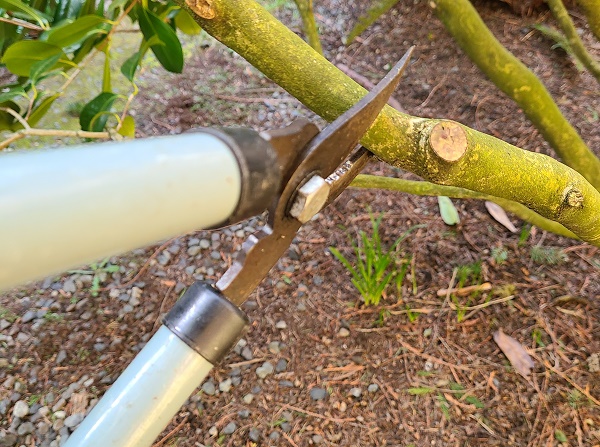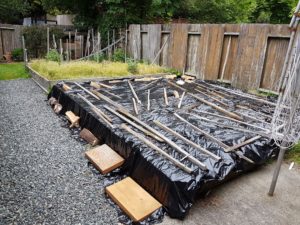Buyer's Guide
How To Choose Garden Loppers For Pruning (Long Handled Pruners, Tree Loppers)
As part of your pruning kit, you will need a pair of garden loppers for those tough pruning jobs. This buyers guide outlines essential features for consideration when buying loppers, the different cutting mechanisms that may better suit your pruning needs, and helps with how to choose the best loppers for pruning shrubs and trees.
Loppers are a step up from hand pruners (secateurs) and the go-to before you need the heavy duty pruning saw. This pruning tool is designed to cut stems and branches that are up to 4 cm (1.5 inches) in diameter. Loppers are stronger than hand pruners and with longer handles. They can remove thicker stems and branches but with the same effort as if using hand pruners on a thinner stem.
What To Consider Before Buying Pruning Loppers
Bypass Loppers
The cutting blades of bypass loppers function like scissors where the sharp blades slide past each other to provide a clean cut. Bypass loppers are designed with green stems or live wood in mind. For deadwood, consider using an anvil lopper (see below). The bypass lopper’s overlapping mechanism is ideal for trimming back overgrown growth with a shrub or tree. Both blades must be kept sharp to limit stem damage when pruning.
Anvil Loppers
Like anvil hand pruners, anvil loppers are designed for cutting deadwood. The sharp single cutting blade closes down onto a flat anvil-type edge. Needless to say, the cutting blade needs to be kept sharp to prevent it from crushing the stem. When you have a good pair of extremely sharp anvil loppers, they offer added power when cutting thick deadwood.
Traditional Hand Loppers
This is your traditional or standard lopper without the cutting mechanisms mentioned below to give extra cutting power. It relies on your arm strength. The traditional lopper is simply a hand pruner with longer handles available with either bypass or anvil-type blades.
Telescoping (Extendable) Loppers
While loppers have long handles by nature of the design, various loppers also offer telescoping, extendable handles. This additional adjustment with the telescoping lopper offers an increased reach and extra leverage for those further away branches, so you don’t need a ladder.
Ratchet Lopper
To increase ease of power, the ratchet lopper is designed with a squeeze and release stepping action. This ratcheting action helps provide the cutting power needed while easing pressure on your arms and shoulders. It makes pruning easier for cutting thicker branches with less effort and ideal if you have limited arm strength.
Compound Action Loppers
Similar to ratcheting loppers, the compound action lopper offers extra cutting pressure. This compound action works with a lever mechanism that increases force and can sometimes triple the cutting power. This lever-cation gives an advantage to pruning even thicker branches. Compound action loppers need to be opened further apart to get around these thicker branches. While they offer more power cut, they can sometimes be heavier to hold, though some compound action loppers are getting lighter.
Geared Loppers
Loppers with a geared mechanism can also offer more cutting leverage than the traditional lopper. Geared loppers work similarly to compound action loppers in that they need to open wide to get around the branch. Once in place, the geared mechanism, which is below the cutting blades, increases the force on the cut. They are generally lighter than compound action loppers.






